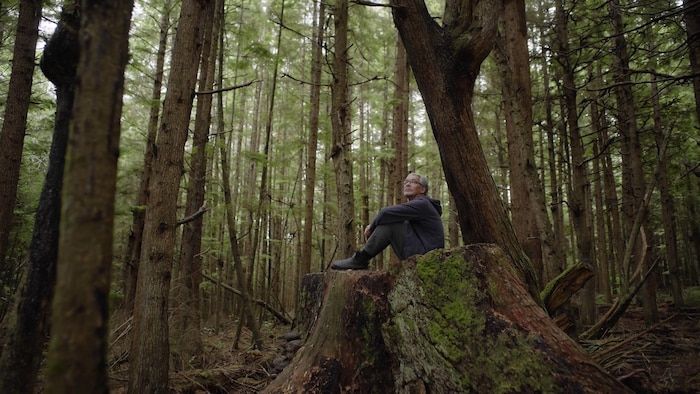In his documentary Rougemania (Red Fever), Canadian director of Cree origin Neil Diamond explores the considerable influences that Aboriginal people have had – and still have – on Western culture.
In the world of fashion, most of the big names in haute couture, from Jean-Paul Gauthier to Ralph Lauren via Karl Lagerfeld, have been inspired by indigenous culture by using moccasins, fringes, pearls or bolo ties, immediately reminds us of the feature film.
Open in full screen mode
A model wears pants with fringes during a Ralph Lauren fashion show in New York on April 29, 2024.
Photo: afp via getty images / CHARLY TRIBALLEAU
The same goes for sports, where even today thousands of sports teams – amateur and professional – use an indigenous name or symbol.
The influence of the First Nations on the origins of democracy is undeniable, argues Neil Diamond, who bases his argument on the first exchanges between European settlers beholden to the king and Aboriginal people who enjoyed individual freedom.
Many Aboriginal people don’t realize how deeply their culture has influenced fashion, politics and sports.
I would like young Aboriginal people to see the film and be proud of their culture. Because when I was young, at school, what we were taught about ourselves was very stereotypical and reductive.
continues the director from the community of Waskaganish on the James Bay coast.
The feature film, which was co-directed with Catherine Bainbridge, transports us to North America and Europe, from Kansas City for the Super Bowl event, to New York for the MET Gala or to Paris, to address the period of colonization and the Age of Enlightenment.
Open in full screen mode
Fans of the Kansas City Chiefs football team do the “tomahawk chop” by extending their arms in a chopping motion and singing a made-up war song. This tradition is criticized by Aboriginal people.
Photo: Getty Images / Wesley Hitt
But these traces of indigenous culture transposed into popular culture also navigate in an ambiguous manner between admiration, appropriation and caricature, arouse indigenous experts and activists who were given the floor in this feature film of nearly two o’clock.
By addressing the issue of cultural appropriation, Rougemania turns out to be in some way a following
to the documentary Reel Injunreleased in 2009, in which Neil Diamond explored the representation of Indigenous people on the big screen, and more specifically in Hollywood.

Open in full screen mode
Cree-Canadian director Neil Diamond
Photo: Photo provided by pixelleX
When I lived in Europe, people had no idea what Native people looked like. They only had an idea about movies and popular culture
he remembers. There was a misrepresentation of Indigenous people.
This theme, recurring for Neil Diamond, will also be at the center of his next film where he will explore the influence of the Natives of the northwest and Alaska on the surrealism artistic movement.
I am often asked what I think about the appropriation of indigenous cultures. We are surprised that it can amuse or even flatter me. But I understand that other indigenous groups are offended, furious, and see it as a form of colonialism.
Very often, he explains, these appropriations or exploitations of aspects of indigenous culture are often made by people who thought they were doing the right thing, but who were unaware of their meaning.
And we bet that this issue will remain an inexhaustible subject for the director, who admits that Rougemaniaonly shows the tip of the iceberg
.
The documentary by Cree director Neil Diamond opens in theaters Friday across Canada.
A launch screening of the film will be held on Friday, June 14 at 7:30 p.m. at the Cinémathèque québécoise in Montreal. A second special screening will take place on June 21 at the Cinéma du Musée in Montreal.








